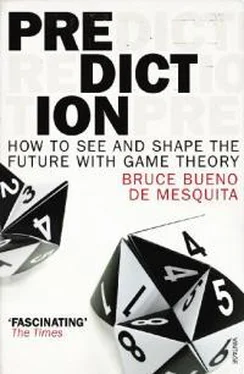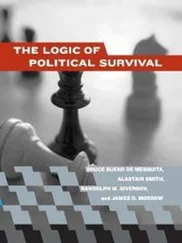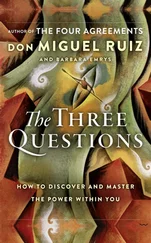Let’s review a few critical facts before plunging into the analysis. Back before the November 2008 presidential election, candidate Barack Obama promised to withdraw American troops from Iraq within sixteen months. On February 27, 2009, ensconced in the White House, Obama stretched his pre-election withdrawal timetable a little bit, to August 2010. That did not seem to have elicited any great controversy either among “pro-war” Republicans or “anti-war” Democrats. But when he announced the timing of the U.S. withdrawal, he also declared his intention to keep fifty thousand American troops in Iraq. That’s no small, token force. It is, in fact, 36 percent of the total number of U.S. soldiers in Iraq at the time he announced his policy. Not too surprisingly, he was subjected to plenty of complaints within the ranks of the Democratic Party for moving too slowly on pulling U.S. forces out of Iraq altogether. Predictably, he also got scant praise in return from the Republicans. Politics is not a warm and cuddly business. Obama took additional heat because these combat-ready troops are slated to stay in Iraq at least until 2011, when a pre-existing agreement with the Iraqi government calls for a full withdrawal. Of course, the possibility remains that the 2011 deadline could be extended indefinitely.
The decision President Obama made in February 2009 and the reality he will face in August 2010 may look alike, and they may not. Pressure within his own party and changing circumstances on the ground might result in a decision to keep far fewer troops in Iraq. But of course it is also possible that President Obama will stick to his guns (fifty thousand of them). I am not going to try to resolve here which he will do, but I am going to use the predictioneer’s game to resolve which he ought to do. The answer will not depend on my personal inclinations or those of my students; I certainly don’t know what they favor. I had barely given this question any thought myself before doing the analysis.
Of course, this investigation touches on only a few aspects of the policy implications of keeping U.S. forces in Iraq or withdrawing them. Facets of American security not examined here may also be influenced by the U.S. decision to pull out of or stay in Iraq. For instance, the troop decision also might make a difference in which way Iran heads in its pursuit of a nuclear capability. But I do not tackle that issue here. I will just say that the prospects of resolving that country’s nuclear threat are sufficiently good (based on earlier analyses I have done on Iran) that I do not believe a continued, greatly reduced American military presence will materially tip the resolution of the nuclear issue one way or the other. 1
WHY MIGHT IRAN AND IRAQ WANT TO BE PARTNERS?
Pulling American troops out of Iraq is predicated on the idea that by the summer of 2010 Iraq will be able to defend itself against internal and external threats to its security. The Iraqi leadership must, of course, be mindful of the giant white elephant on its border as well as the potential of resurgent insurgents at home. One way to cope with its giant neighbor, Iran, is to forge close ties between the two countries. With that possibility in mind, let’s think about the range of deals Iran’s Shi’ite theocracy might strike with Iraq’s secular but Shi’ite-dominated government. As we contemplate a possible Iraqi-Iranian partnership, we must keep in mind that relations between Sunni and Shia Muslims are often extremely fractious, and more so in countries like Iraq, where both groups make up a substantial segment of the population.
Iraq’s population is divided roughly 65 percent to 35 percent between Shia and Sunni Muslims, and many followers of the two factions hate one another. That divide certainly was a major factor that gave rise to Iraq’s insurgencies and the U.S. creation of those CLCs we talked about in Game Theory 101. During the insurgency, many Shia residents in Sunni areas were driven from their homes, and sometimes murdered on sight, by local Sunni militias. Likewise, Sunni residents in Shia-dominated communities were driven out or murdered. Although things are calmer now and some people have returned to their homes, many have not and animosities linger just beneath the surface, ever ready to explode at the first sign of provocation.
Unlike Iraq, Iran does not have much of a domestic Shia-Sunni problem. That’s not so surprising. After all, Sunni Muslims are in scarce supply in Iran. There are about ten Shia for every one Sunni in that country. That is, however, not to suggest that Iranians are warmly disposed or even indifferent to the Sunni branch of Islam. Iran has certainly had more than its share of contentious relations with Sunni-dominated governments in the Middle East and in the wider Islamic world. Most notably, Iran had terrible relations with Iraq during the long years in which the latter was run by Saddam Hussein. Iran and Iraq fought an eight-year war that killed more than a million people and saw the extensive use of chemical warfare. Few in Iraq or Iran have forgotten, and fewer still are likely to forgive, so building bridges between these two countries will not be an easy matter. Staying apart, however, carries its own considerable share of risks.
The Shia-dominated Iraqi government headed by Prime Minister Nuri al-Maliki sees Iran as a potentially sympathetic and like-minded ally. In contrast, he and his closest Iraqi followers may consider their own Sunni brethren a threat to their regime and their vision for Iraq’s future. Maliki surely wants to shore up Iraq’s security and, according to the data my students assembled, he sees forming a strategic alliance with Iran as the way to do so once the U.S. reduces its military presence or pulls out altogether. His starting position on the partnering issue described in the table on the next page is at 80. That means getting Iran to guarantee Iraq’s security. Such an assurance would provide a credible military threat from Iran against any anti-Shia rebellion in Iraq. That could be just the insurance the Maliki government needs.
THE IRAN-IRAQ PARTNER’S GAME
Position
Meaning
Detailed Implications for Iran-Iraq Relations
100
Full Strategic Partnership
Free flow of arms and military technology; a mutual defense alliance; joint intelligence operations
80
Concentrated Partnership
Restricted flow of arms and technology; some intelligence sharing; an alliance in which each guarantees to defend the other
50
Restrictive Partnership
Limited arms flow; no technology transfer; no shared intelligence; each promises not to use force against the other
20
Minimal Partnership
Considerable restrictions on arms flow; no signed alliance agreement at all
0
No Strategic Partnership
No flow of arms or technology; the two governments reaffirm their commitment to the Algiers Accord
2
Putting such a partnership together, however, will not be easy. Besides the usual complexities behind any international negotiation, it is likely that the U.S. government will present stiff diplomatic opposition to such a move by Iraq. Besides pressure from Obama, we can be confident that those who represent Iraq’s Sunni interests will also strenuously oppose any deal with Iran. As for Iran, a deal with Iraq would advance Iran’s ambition to become the dominant regional power, but the Iranian government will have to ponder the risks of associating closely with a regime that could fall into Sunni hands. The partnership issue seems especially well suited to evaluating whether the United States is better off keeping some troops in Iraq or removing all of them. Iran, after all, is hardly the state Obama would like to see exercise real influence over Iraqi policy, and a partnership between the two countries could have exactly that consequence.
Читать дальше











